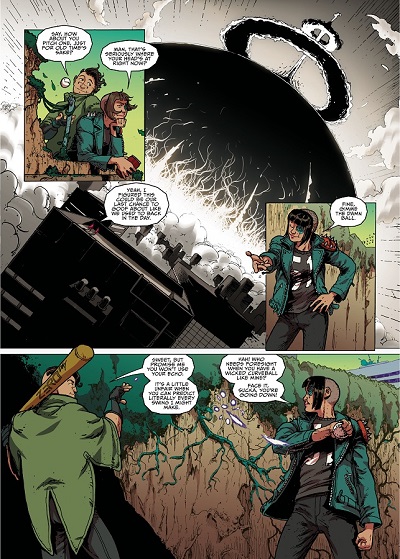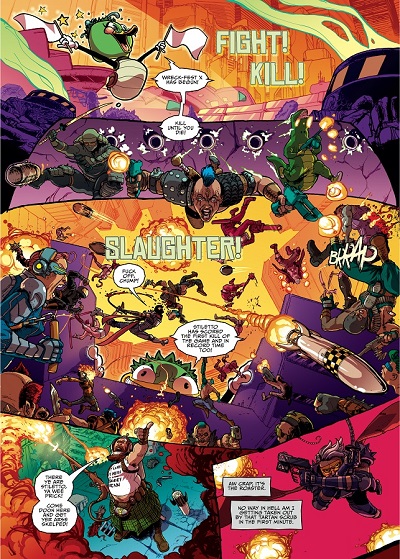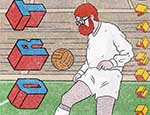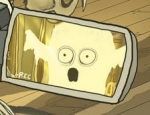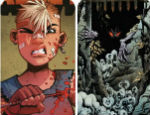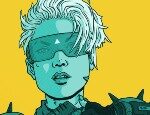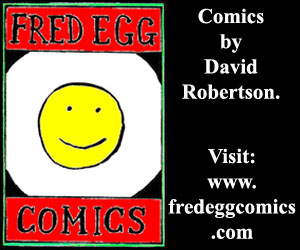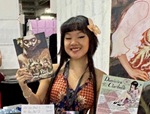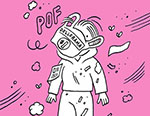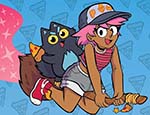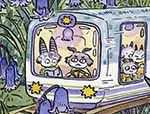THOUGHT BUBBLE MONTH 2024! When it comes to genre fiction comics Dave Cook is a staple of the UK indie scene. With numerous successful Kickstarter campaigns behind him, and the recent Titan collection of his excellent cyberpunk series Killtopia now on the shelves of your favourite comics shops, his comics journey is representative of how self-publishing can be a stepping stone to greater recognition. Prior to this year’s Thought Bubble, we caught up with Cook to discuss what’s next for Killtopia, creative collaborations, and what advice he has for would-be creators…
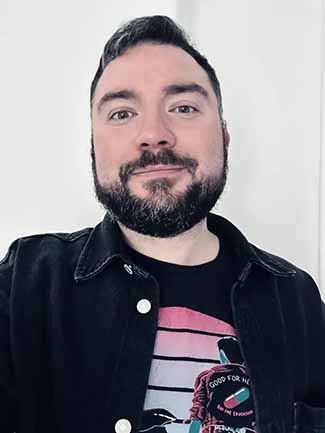 ANDY OLIVER: Your five-volume sci-fi series Killtopia has just been collected by Titan Comics. So the first obvious question… can you give readers yet to discover Killtopia a quick idea of its premise, world and characters?
ANDY OLIVER: Your five-volume sci-fi series Killtopia has just been collected by Titan Comics. So the first obvious question… can you give readers yet to discover Killtopia a quick idea of its premise, world and characters?
DAVE COOK: Absolutely! Killtopia is a cyberpunk series that flips the genre on its head with lots of dark humour, societal commentary and wild, abstract themes.
It’s set in Neo Tokyo, a city that’s been overrun by an infestation of killer mecha. The Japanese government walls the machines into a district called Killtopia, home to the world’s hottest bloodsport.
High tech bounty hunters called Wreckers can make their fame and fortune hunting the robots. Our protagonist is Shinji, a rookie Wrecker who hunts the machines to pay for his dying sister Omi’s medical care. She has a pandemic disease called the Rot which is slowly killing humanity.
Everything kicks off when Shinji encounters Japan’s first sentient mecha, Crash. Coincidentally, Crash has the cure to the Rot inside his code, so they set off to heal the planet while being pursued by every Wrecker, yakuza crime lord and assassin in Neo Tokyo.
You’ll dig it if you like Cowboy Bebop, Akira, Ghost in the Shell, Cyberpunk 2077 and more.
AO: How did the book come to Titan?
COOK: After the series finished with book five, I considered Kickstarting the collected edition on my own, but after speaking with a few fellow comic creators in the UK, they convinced me to pitch it around various publishers. Before then, I’d lacked the confidence to really approach and introduce myself to editors but decided to get over myself and start saying hello to editors.
Following that, there were two publishers interested, Titan Comics and another company. Titan felt like a great fit and we went ahead. They’ve been great to work with throughout the process.
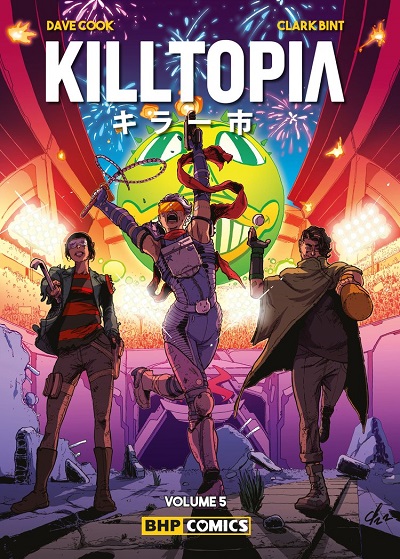
AO: When I reviewed the Killtopia finale before Thought Bubble last year I spoke about its taut pacing and how it put new spins on some of the standards of the sci-fi genre. Over the years you worked on those first five volumes did the series evolve or even deviate from your original narrative concept?
COOK: Oh definitely. The series evolved a lot across all five volumes, aside from the core concept and finale, which were nailed down from the start. I always like to have my core plot ‘beats’ locked in before I write a new series (the main hook, characters, setting, the main plot moments and the ending)
But with Killtopia, I wanted to write each book after the previous one was Kickstarted, as I was keen to include satirical and more series takes on real world events.
The series was initially inspired by a news piece I watched about the UK’s National Health Service (which gives people here free healthcare). Our government had started selling off and privatising parts of it, and I started to wonder what would happen if, overnight, everyone in our country had to start paying for their medication and healthcare.
What lengths would they go to, in order to get the care they needed? This was where the Killtopia bloodsport came from.
Interior art by Clark Bint
But initially, Shinji was an activist who was fighting the Japanese government, who were refusing to fix the broken anti-Rot air purifiers down in Neo Tokyo’s slums.
In this first version, Stiletto was more like a cyberpunk Catwoman, a femme fatale who was the on/off love interest of Shinji, whose motive was never really clear.
Our villain, Yurei, was initially just one character, not a whole production line of corrupted androids. I had also written a wild fight scene against Yurei and Stiletto on the side of a speeding bullet train. Stiletto was latched onto it with her magnetic boots. It was a fun scene but it didn’t really move the plot forward, so I cut it out.
AO: Did you find yourself taking it in new directions you hadn’t originally planned?
COOK: Overall, the series stayed true to what I’d imagined way back in 2016, but in the early drafts, Shinji’s sister Omi was more of a side character and someone to be rescued, and that never sat right with me.
Her character development took the longest to flesh out, but it was worth it, as she goes from being someone who needs to be protected and saved, to being the most important and powerful character in the entire plot. I’m really happy with how Omi turned out, and how she’ll develop further in future projects too…
Interior art by Clark Bint
AO: Killtopia is a rollocking good action story but it’s not without its elements of cutting social commentary either. Why do you think science fiction, in particular, is such an effective genre for exploring those themes?
COOK: This is a great question. I think it’s because science-fiction typically takes place in settings that are plausible. They mirror our own reality just enough that you can buy into them. I especially like it when sci-fi settings aren’t too far in the future and the technology feels like something we could actually have in a few decades.
For the best part, Black Mirror does this wonderfully. The most engaging and frightening aspect of that show is the technology feels like it could only be a few years away. I think that’s my sci-if sweet spot – when, if you squint a little, the setting starts to resemble our own.
That’s why writing Killtopia was such a joy. I had the wiggle room to get creative while satirizing and lampooning aspects of modern life in ways that aren’t yet possible, thanks to Neo Tokyo’s heightened reality and near-future tech.
Ultimately, I think sci-fi settings expand the writer’s toolkit, allowing them to stretch their concepts and world without jumping the shark and falling into the realm of fantasy. That’s the point where the setting stops resembling our own, and that mirror on modern society falls apart.
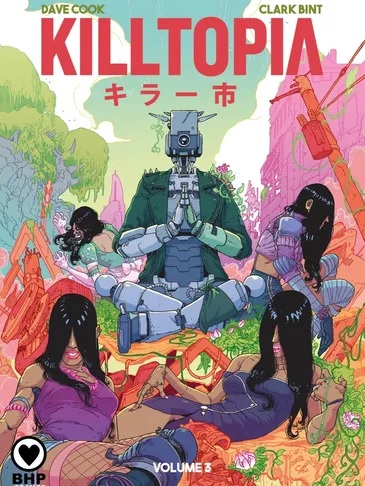
AO: What did your collaborators Clark Bint and Craig Paton bring to Killtopia in terms of realising the kinetic energy, frenetic action, and world-building of the story?
Craig and Clark both brought a lot to the table through their incredible artwork. With Craig, it was the detailed line art. He made Neo Tokyo – with its many sprawling vistas and dense layers – feel both chaotic and regimented at the same time.
Yes, Neo Tokyo is a dystopia where the oppression of authority is crushing the lower classes, but down there in the slums, the people are still finding ways to have a blast, party and embrace their weirder side. Craig managed to strike this balance wonderfully, while making the city feel like a living, breathing place full of visual lore (and a ton of Easter eggs that we both snuck in there!)
Clark is quite frankly a genius. Every page he creates is incredibly dense with detail, but he captures movement and abstract imagery in a way I’ve rarely seen matched in comics. When Killtopia gets weird (as it often does) Clark always knows when to dial up the warped visuals – from fish-eye lens perspectives to warped body proportions to convey movement or a feeling.
It got to the point with Clark where my panel descriptions started to get shorter and shorter towards the end of the series, as I knew that he and I just ‘got’ each other’s headspace. I trusted that he’d understand what I was going for and every single time he delivered. I never once asked for a significant change to a panel layout, as I was always blown away by how he interpreted what I was going for.
I think that’s a rare and wonderful thing indeed.
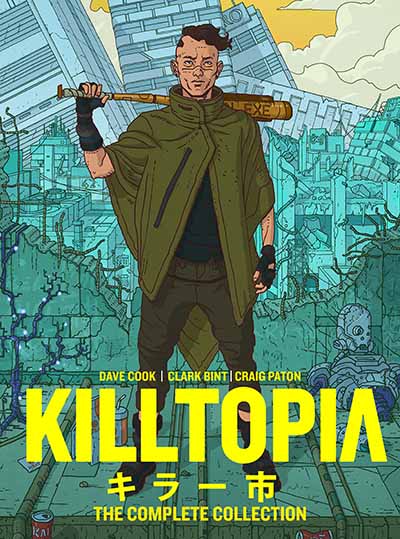
AO: What will we see in terms of extras in the Titan volume?
COOK: There are some usual things you’d expect, like a foreword, script to page comparisons, and art print gallery and more.
But, there’s a feature in the book that I actually don’t want to spoil. It’s something that totally fits with the Easter-egg heavy nature of the series, as well as the satirical nature of the story as a whole.
I won’t say any more about what it is, but I’m sure our long-time readers will really get a kick out of it. It’s not something I’ve ever seen included in a comic book before…
AO: You have a new series coming soon with David Cousens, JP Jordan and Micah Myers. What can we expect from Satanic Panic?
COOK: It’s a heavy metal horror series set during the satanic panic hysteria of 1986 – when concerned parents and politicians across America believed that heavy music, horror movies and things like Dungeons and Dragons were converting their kids to satanism.
The series stars Casey, the singer and lead guitarist of a crappy, failing metal band. One day she accidentally summons a fate-altering demon from hell, who offers her the chance to remix her life and before a rockstar.
I started thinking about Satanic Panic ahead of turning 40. Not that 40 is old, but I was mulling over all my past life choices and what my life would be like now if I’d made different choices back in the day. I also played and sung in a few metal bands back in the days, and one of them was doing pretty well, having supported the likes of Skindred and a then-new band called Bring Me the Horizon (I wonder what ever happened to them…)
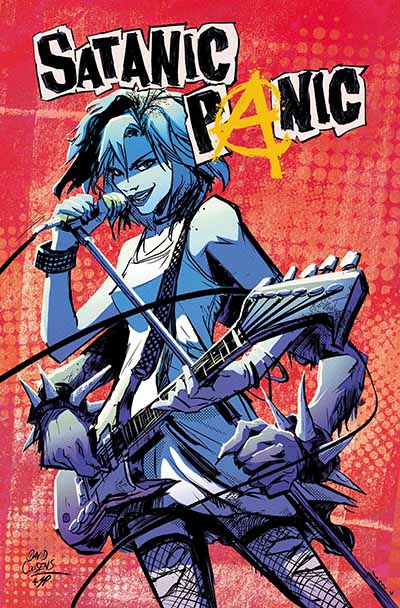
I was keen to do a series with artist Laura Helsby as we both have similar tastes in music, and together we fleshed out the concept and loose arc for the first iteration of Satanic Panic. Unfortunately Laura had to move on to other commitments but we still keep in touch about how the series has evolved and to get second opinions on things, so Laura is very much still a part of the project.
It’s the story of our big ‘what-ifs’ and how we often dwell on how our lives could or should be, instead of appreciating the good things we do have. It’s also been nice to go back to how it felt in my old bands, playing shows in crappy dive bars and trying to make it a success – until inventively it all falls apart…
We’re in talks with publishers now and we may Kickstart it. It’s early days yet, so watch this space!
AO: As someone who has been part of the UK indie scene for a while what advice do you have for emerging creators trying to establish themselves?
COOK: Can you believe it’s been ten years since my first ever comic came out? That’s wild!
I guess my first tip is; don’t do what I did and put off establishing contacts with editors and publishers. I didn’t start reaching out to editors until early last year because I didn’t think I was good enough, and that they wouldn’t want to check my stuff out. At this point I have to name drop and thank Alex Moore and Alison Sampson for their time, advice and for pushing me to start networking more.
So yeah, try to not let imposter syndrome hold you back. There’s no harm in saying hi to an editor at a publisher just to introduce yourself and get on their radar – even if you don’t have anything to pitch. Just be sure to ask them if they’d be interested first before sending them your portfolio and all your stuff across.
I’d also say that if you have a story you can’t wait to tell, then just start making it. So many people have asked me how to start writing a comic and the honest answer is that you just have to start. I know that’s not helpful, but it’s true. The main reason I’ve heard for people not starting is that they’re worried they’re not good enough, or their script will be crap.

And to put it bluntly. Yeah, your first draft won’t be great, but neither are mine. I think that applies to every comic writer out there. The first draft is the skeleton, the foundation of your story. Then you go back over many re-drafts to make it great.
The first draft is always the hardest. But if you power through and get it all down (even just as short cliff notes) then I promise it’s much easier to go back and start making it awesome.
You CAN do it, but remember that it’s not a race. Take your time, don’t burnout, and look after your mental health. Comics aren’t worth upsetting yourself over, honestly!
AO: Are there any other upcoming projects, either in comics or outside, that you can give us any teasers about?
COOK: Absolutely! We’ve almost finished production of Killtopia: Nano Jams, the first anthology set in the world of Neo Tokyo. It was due for a February ‘25 launch but if I can get it out to backers and on general sale sooner, then I absolutely will. Stay tuned!
I’m also in talks with publishers after Yuta, another new comic series with a (soon to be revealed) artist. Set during the Japanese invasion of Okinawa in 1609, a young spirit medium teams up with an ancient entity from another world to murder the warlord who has taken their home.
I’m mega excited about Yuta, as it deals with death through the lens of Japanese and Okinawan folklore, so you can expect lots of yokai spirits, oni demons and other wild concepts. It’ll be ready when it’s ready but you can find the issue #1 cover and some pages on my socials now.
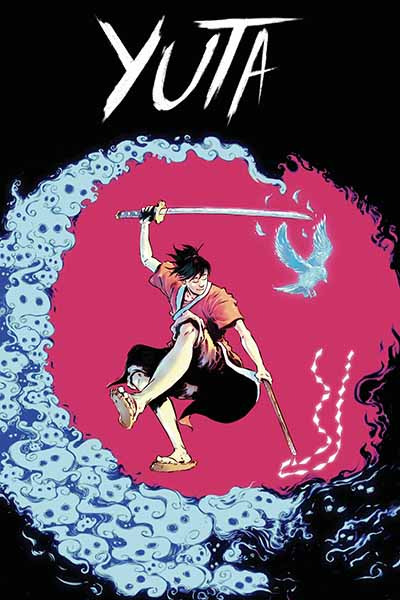
I’m also working on the issue #3 script for Killtopia: Phantoms, the sequel to our first story arc. It’s set five years later and has a mostly new cast of characters. It’s about a mind hacker who hijacks the brain implants of everyone in Neo Tokyo. The hacker just wants to ruin society by making people believe disinformation, conspiracies and to make their biggest fears seem real. It’s a satire on how politicians and pundits use fake news to turn people against each other. Stay tuned for more on this.
Lastly, in December I’ll be making a slow start on my third video game history book. I can’t reveal the topic yet, but these books usually take about two years to finish so it’ll be a while before I can say more.
(You’d never guess that I work a 9-5 job on top of all this!)
AO: Is there a creator or a comics project you’re particularly looking forward to checking out at Thought Bubble this year?
COOK: I’m really hyped to meet J.L. Westover (better known as Lovenstein) as his webcomics are like a daily shot of humour and happiness that I’ve enjoyed for years now. Just a total legend and his humour is so cutting and hilarious.
And I’m just hyped to catch up with the comic crew again. I’ve not tabled much this year to focus on my networking and pitches, so it’ll be awesome to see everyone again. That show reminds me of what a great, big, friendly, happy family the comics scene really is. I always feel lucky to be a part of that.
Interview by Andy Oliver
Find out more about the work of Dave Cook on his website here.
Dave Cook will be at Table B54 in the DSTLRY Hall at Thought Bubble.
Thought Bubble 2024 runs from November 11th-17th with the convention weekend taking place on the 16th-17th. More details on the Thought Bubble site here.
Read all our Thought Bubble 2024 coverage so far in one place here.
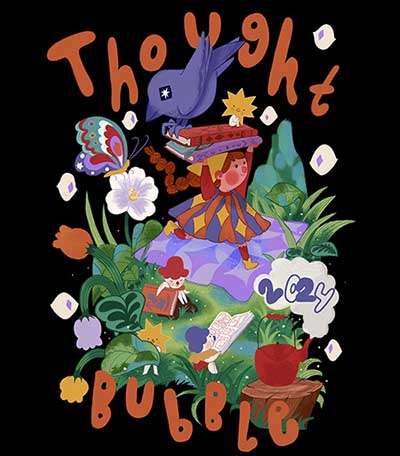
Art by Rocío Arreola Mendoza





